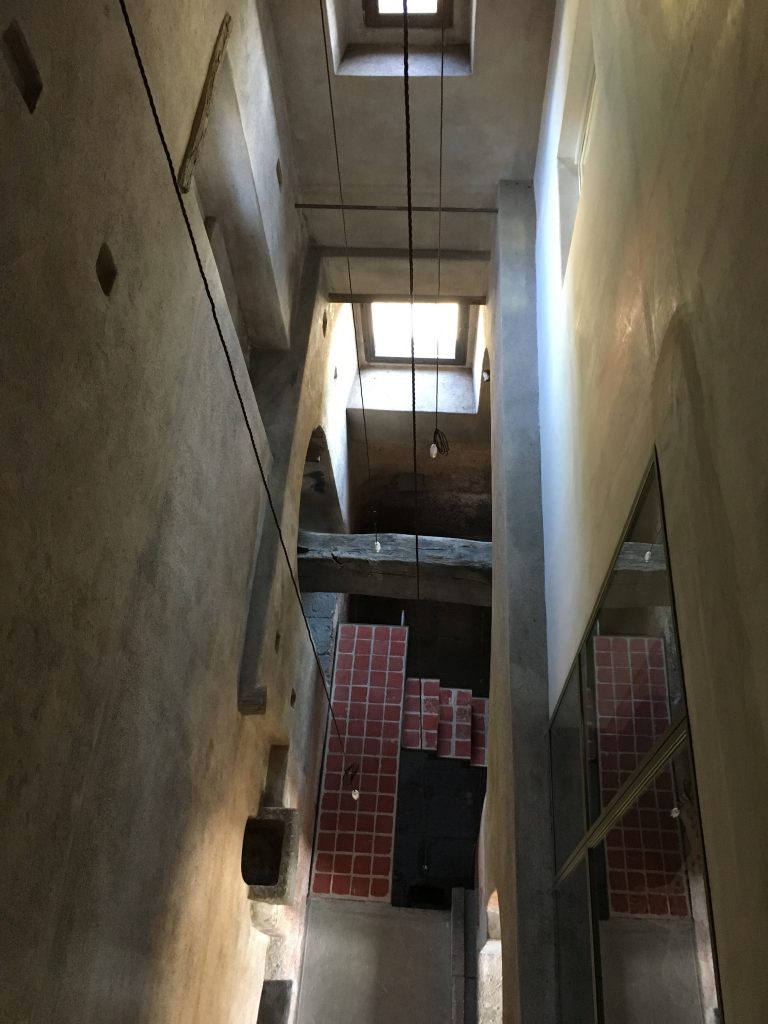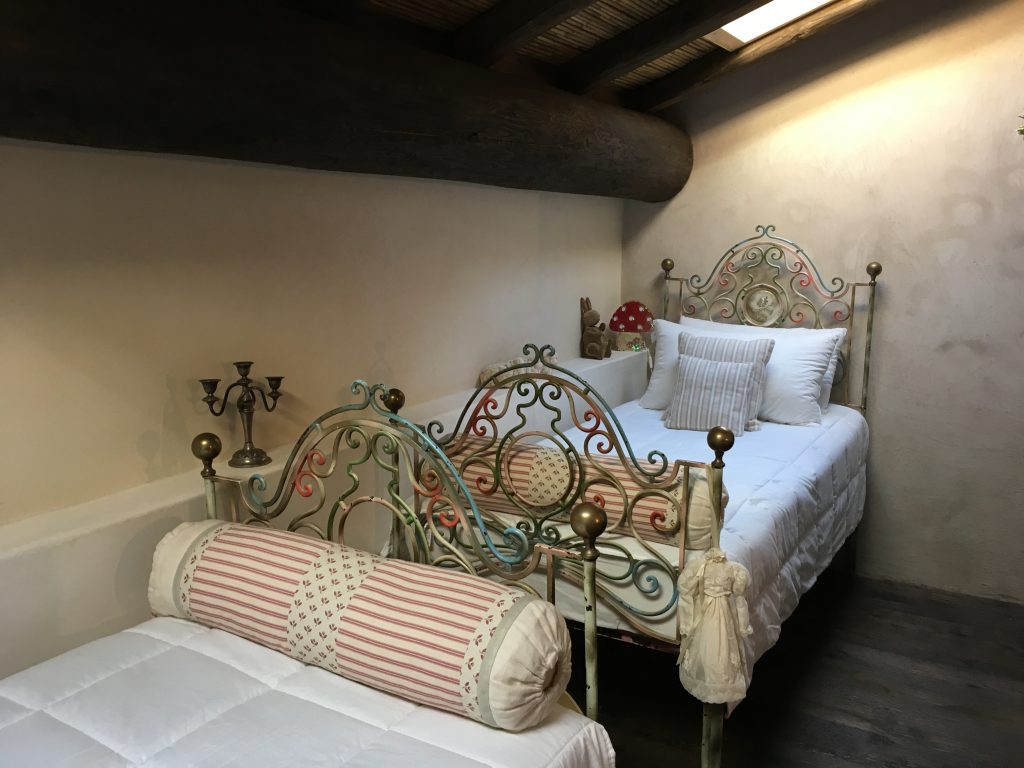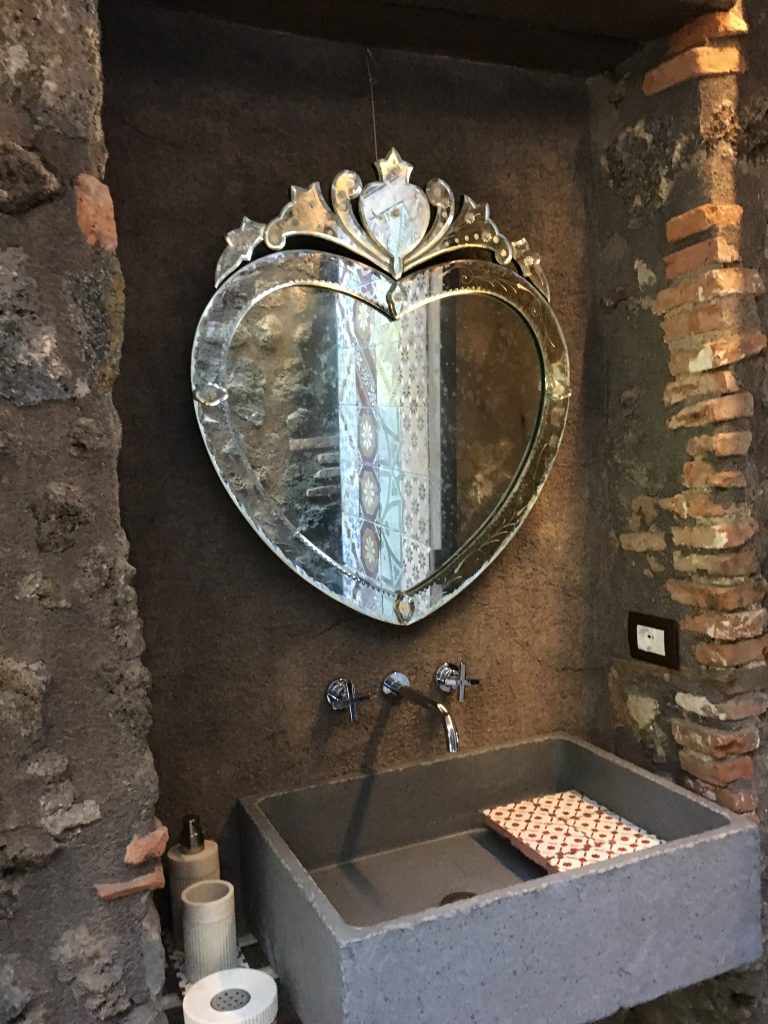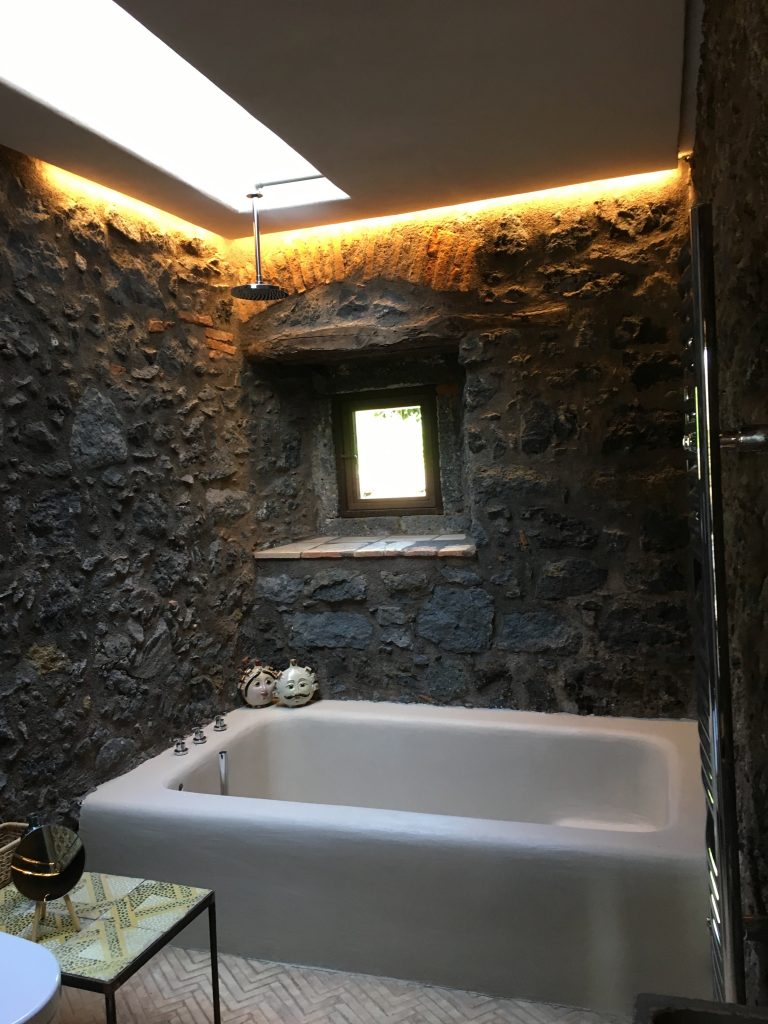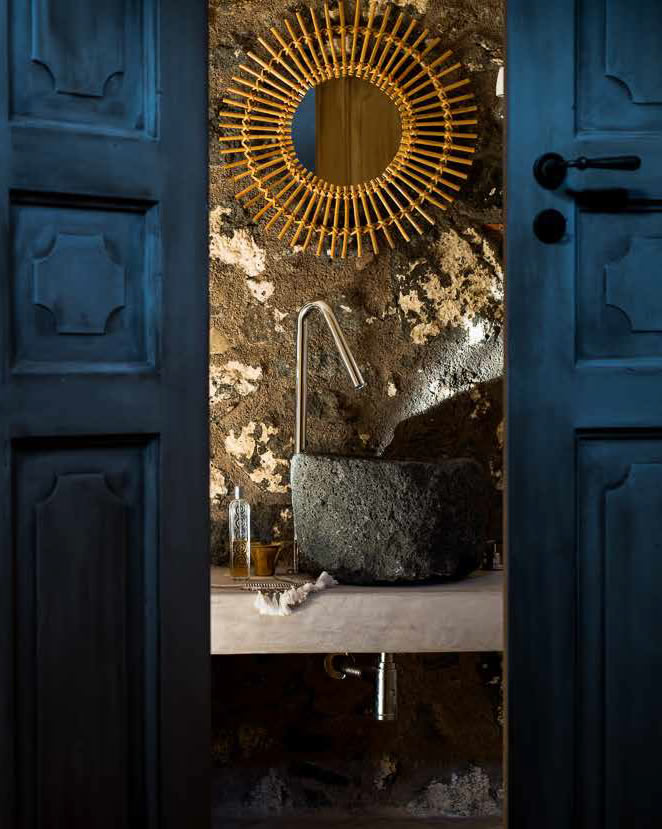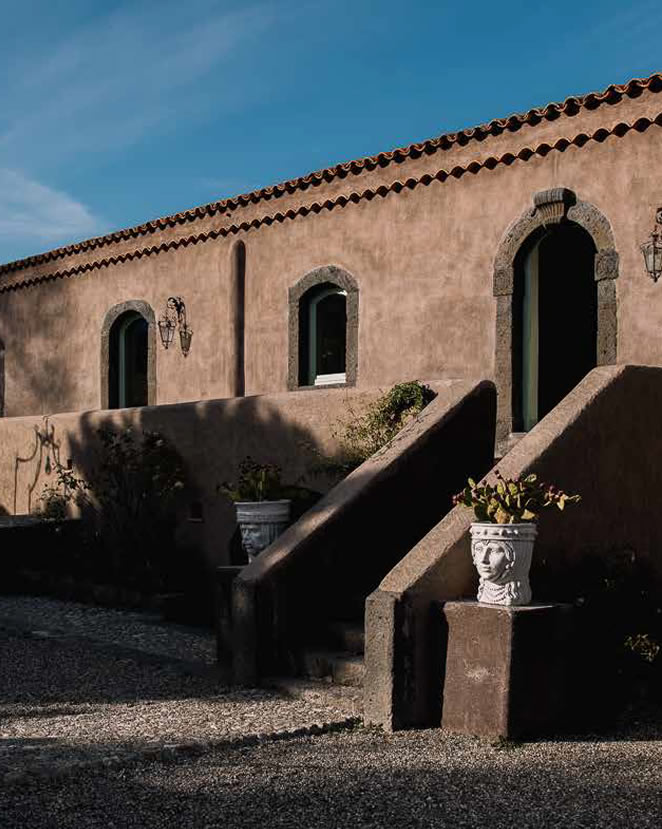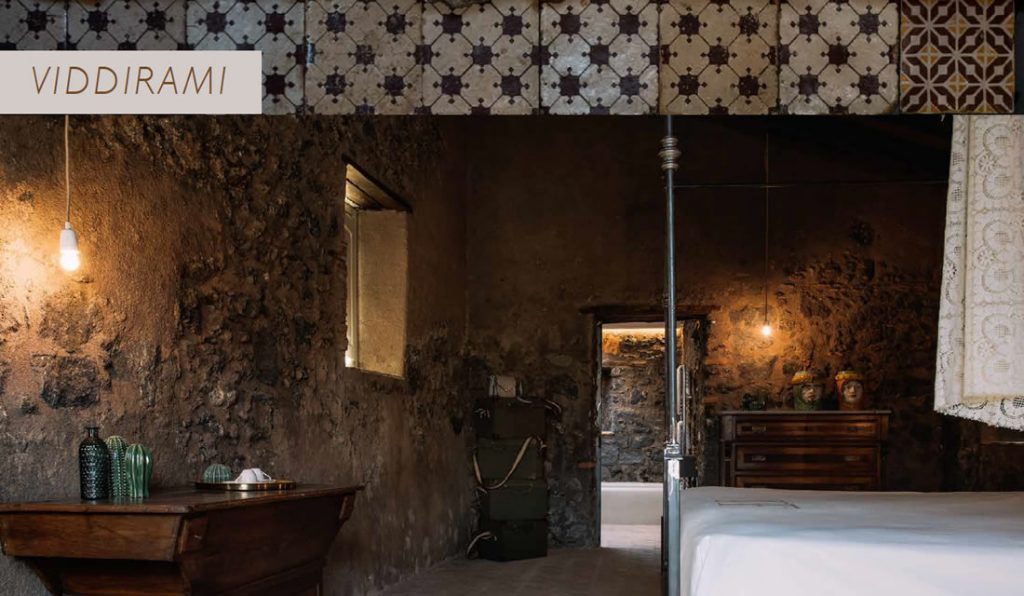Rovitello, the northern slope of Mount Etna. The Fessina estate is a corner of the volcano and of its vineyards which can be reached by crossing through the hamlet and, looking downwards towards the valley, can be sighted just below the railroad tracks. The property belongs to Silvia Maestrelli, with both a bit of Tuscany and also of Milan in her character: 17 acres of vineyards, Nerello Mascalese the grape variety, old head-pruned bush vines, plus another seven acres of Carricante white grapes cultivated, together with other families, between Milo and Biancavilla on the southeastern-facing slope of the mountain. The wines are, needless to say, legendary, first and foremost the A’Puddara white wine along with the Musmeci red wine as well, the latter an offering of boundless finesse. What is most striking, in the opinion of this writer, however, is not a single wine but the entire line. Lovely wines, none excluded elegant, full of character and personality, juicy, all of which offer maximum pleasure. Very few Etna producers (two or three) can propose a series which is equally extensive and satisfying.
 On this occasion, however, we will not talk about wine but rather of a hospitality project which has required time, planning, and capital. There are now seven impeccably decorated rooms with a view over the vineyards once cultivated by Ignazio Musmeci (the name refers to the wine, and I recall a truly memorable 2008), located in the old hamlet and in the old cement fermenting tanks known in Sicily as “palmenti”. Each room is different from the others, but all are inspired by the same spirit: living this spot, the mountain, the vineyards, the atmosphere of Europe’s highest active volcano. The spaces of the buildings of the hamlet have been studied and transformed. Each and every room has a name and a story to tell. The details are the synthesis of a concept: Sicilian lace, decorated lava stone, rusted iron, objects of art and objects of the past mix and mingle in a space full of primitive energy. Shapes and materials do not suffer from a sense of nostalgia, quite to the contrary, they express themselves in an entirely authentic way. For example, “Tina” collected the fermented must, a space which symbolized the process of working the wine. Now it is a room which looks over the ancient vines of the vineyard, a slice of land hidden between two hardened jets of erupted lava, a natural amphitheater. In “Canedda”, the harvesters deposited the grapes which were then trod by women. Now it is the name of a fascinatingly romantic room which looks over the courtyard of the cellars. “Cufina” was the basket into which the harvested grapes were placed. Now it is the name of a room, a refuge, with two beds, a romantic garret just under the roof of a former palmento. “Carateddu” was a container which functioned as a measuring device as well, in it wine was once stored, weighed, and marketed. Now it is the name of a room high in the former “Palmento” with a view over terracotta vases and the press. The “Litturina” is the train which here has a special significance. The space between the rails is smaller than the customary one, and the wagons of the trains which cross Mount Etna connect Catania to Riposto and pass through the foothill towns amidst vineyards and lava rock, an exciting trip indeed. This room uses the name of the train and the muffled sounds of the railroad mark, pleasurably, the time passed in the chamber. And then there is, “Istenna”, the tank which collected the water, an indispensable feature of every home on Mount Etna. In the heart of the vital spaces there were the chestnut wood casks for the aging of the wine. Now it is a splendid room just a step away from the current aging cellars. Last but not least, “Verderame” the mixture of water and copper held in the tanks next to the well in the courtyard. Now it is a room hewn into the local lava rock.
On this occasion, however, we will not talk about wine but rather of a hospitality project which has required time, planning, and capital. There are now seven impeccably decorated rooms with a view over the vineyards once cultivated by Ignazio Musmeci (the name refers to the wine, and I recall a truly memorable 2008), located in the old hamlet and in the old cement fermenting tanks known in Sicily as “palmenti”. Each room is different from the others, but all are inspired by the same spirit: living this spot, the mountain, the vineyards, the atmosphere of Europe’s highest active volcano. The spaces of the buildings of the hamlet have been studied and transformed. Each and every room has a name and a story to tell. The details are the synthesis of a concept: Sicilian lace, decorated lava stone, rusted iron, objects of art and objects of the past mix and mingle in a space full of primitive energy. Shapes and materials do not suffer from a sense of nostalgia, quite to the contrary, they express themselves in an entirely authentic way. For example, “Tina” collected the fermented must, a space which symbolized the process of working the wine. Now it is a room which looks over the ancient vines of the vineyard, a slice of land hidden between two hardened jets of erupted lava, a natural amphitheater. In “Canedda”, the harvesters deposited the grapes which were then trod by women. Now it is the name of a fascinatingly romantic room which looks over the courtyard of the cellars. “Cufina” was the basket into which the harvested grapes were placed. Now it is the name of a room, a refuge, with two beds, a romantic garret just under the roof of a former palmento. “Carateddu” was a container which functioned as a measuring device as well, in it wine was once stored, weighed, and marketed. Now it is the name of a room high in the former “Palmento” with a view over terracotta vases and the press. The “Litturina” is the train which here has a special significance. The space between the rails is smaller than the customary one, and the wagons of the trains which cross Mount Etna connect Catania to Riposto and pass through the foothill towns amidst vineyards and lava rock, an exciting trip indeed. This room uses the name of the train and the muffled sounds of the railroad mark, pleasurably, the time passed in the chamber. And then there is, “Istenna”, the tank which collected the water, an indispensable feature of every home on Mount Etna. In the heart of the vital spaces there were the chestnut wood casks for the aging of the wine. Now it is a splendid room just a step away from the current aging cellars. Last but not least, “Verderame” the mixture of water and copper held in the tanks next to the well in the courtyard. Now it is a room hewn into the local lava rock.
In conclusion, the spot is a winning one and enchants with its sense of proportion, its graceful lines and the strata of objects, chosen one by one, which create an elegance which is anything but conventional. An offer of hospitality for which the word “luxury” is not entirely precise.
Tenuta di Fessina
Contrada Rovittello, via Nazionale SS 120, 22
Castiglione di Sicilia (Ct)
www.tenutadifessina.com
Tel. 329.9714353
Coordinate GPS: 37.856482,15.094037














